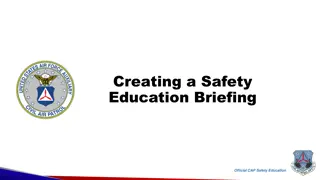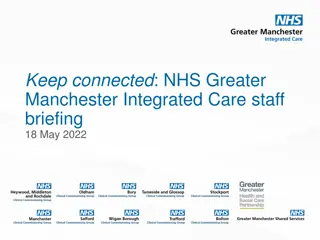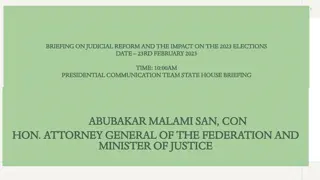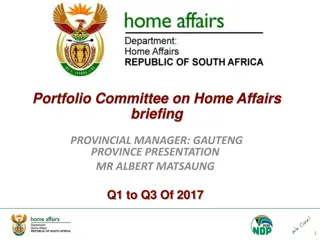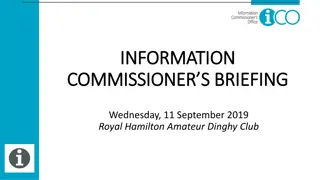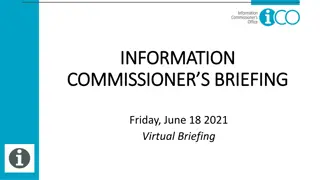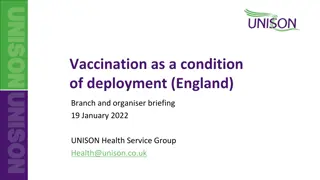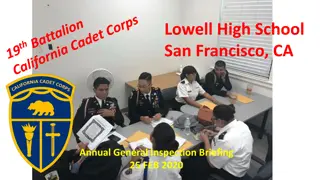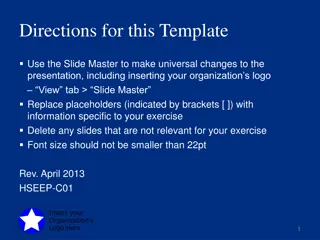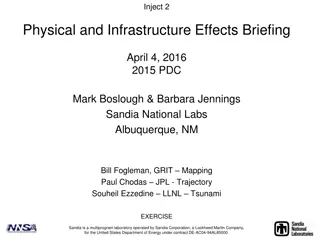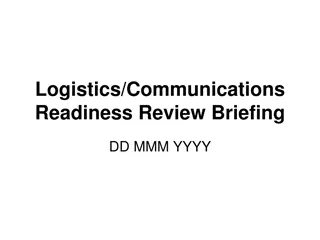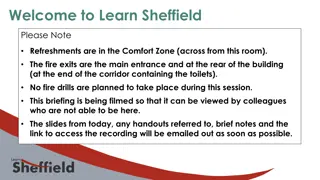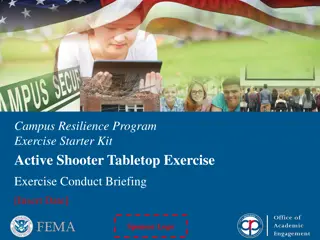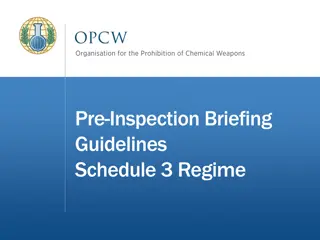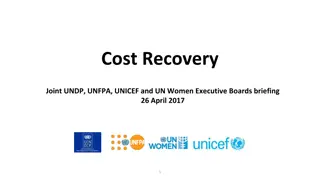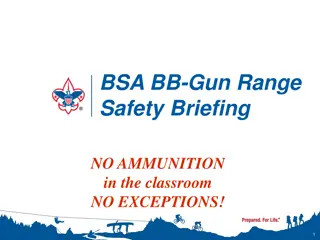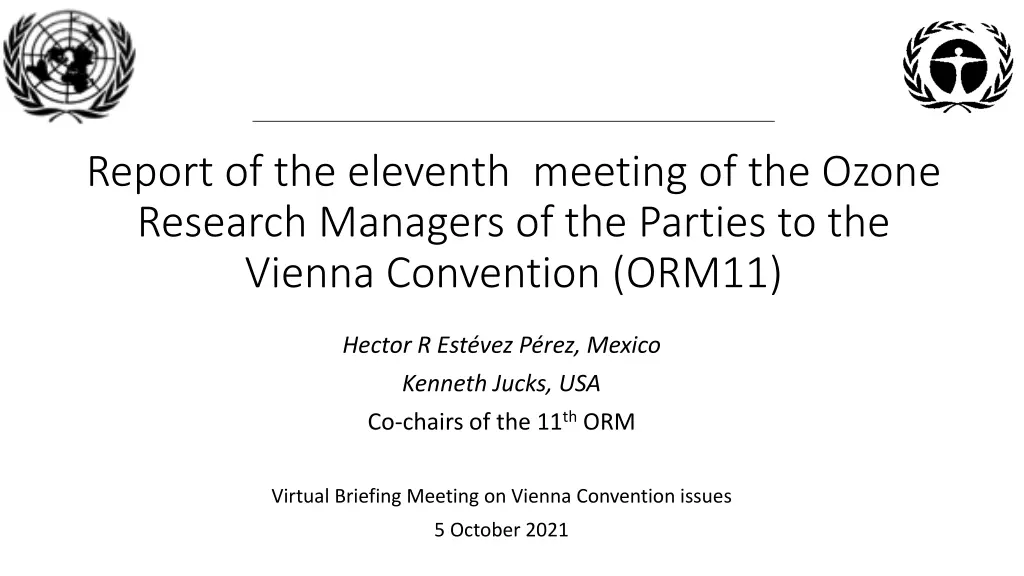
Insights from Ozone Research Managers Meeting
Explore the key discussions from the 11th Ozone Research Managers meeting, focusing on topics like global emissions, aerosols impact, and the need for enhanced observations to address ozone depletion. Learn about recommendations for research improvements in various areas.
Download Presentation

Please find below an Image/Link to download the presentation.
The content on the website is provided AS IS for your information and personal use only. It may not be sold, licensed, or shared on other websites without obtaining consent from the author. If you encounter any issues during the download, it is possible that the publisher has removed the file from their server.
You are allowed to download the files provided on this website for personal or commercial use, subject to the condition that they are used lawfully. All files are the property of their respective owners.
The content on the website is provided AS IS for your information and personal use only. It may not be sold, licensed, or shared on other websites without obtaining consent from the author.
E N D
Presentation Transcript
Report of the eleventh meeting of the Ozone Research Managers of the Parties to the Vienna Convention (ORM11) Hector R Est vez P rez, Mexico Kenneth Jucks, USA Co-chairs of the 11thORM Virtual Briefing Meeting on Vienna Convention issues 5 October 2021
What is the Ozone Research Managers? ORM meeting was established by VC parties to look at national and international atmospheric monitoring and research programmes, identify gaps and make recommendations for improvements. ORM are government managers of research related to atmosphere and ozone depletion. ORM meets every 3 years in the year of the COP, and COP considers their recommendations.
Highlight will be given of the Highlight will be given of the recommendations in 5 areas: recommendations in 5 areas: Research Topics Systematic Observations Gaps in coverage for monitoring ODS emissions Data Archiving and Stewardship Capacity Building.
Research Topics: Improve understanding of global emissions of ozone-depleting substances (ODSs) and related gases Better bottom-up estimates will assist top-down estimates that come from atmospheric measurements. Short-lives species relative contributions to atmospheric Chlorine are increasing. HFC emissions need further monitoring as well. The coupling of climate change and ozone is emerging as an important area of further research. In particular, understanding the changes in stratospheric transport has implications on numerous topics more later.
Research Topics (cont): The effects of Aviation, Rockets, and potential climate intervention . All of these topics ultimately affect the amount of aerosols in the stratosphere. We can include the contributions from volcanic activity and large wildfires as well. Changing aerosols over time will have significant affects on the stratospheric circulation over time, in ways that are difficult to predict.
Systematic Observations: Increase resources for long-term observing networks. This includes, total Ozone, UV, in situ trace gases/ODSs, other key trace gases Key regions where improved monitoring is needed have strong overlap with Article 5 countries (SE Asia, Himalayas, Africa, S. America) Maintain the satellite limb-viewing observations of key trace gases that are currently due to end in ~5 years. These data are needed to monitoring changes in circulation mentioned in Research Topics These data are also needed to maintain the Parties to the MP s desire for timely reporting of potential changes in emissions.
Systematic Observations (cont): Continue the development of low-cost sensors to enable better monitoring of the atmosphere, particularly in Article 5 countries. Need to ensure compatibility with the established observing techniques - Dobson, Brewer, ozone sondes. These techniques will require capacity development as their operation and data processing are new. Investigate how to use ground-based and balloon data to scientifically fill the gap in the satellite data record of key trace species like N2O, H2O, CH4, SF6until a follow-on satellite can be deployed.
Gaps in Coverage for monitoring ODS emissions: Endorse the white paper and forward it to the Vienna Convention and Montreal Protocol parties for their consideration; Note that the activities and methodologies outlined in the white paper provide a sound basis for addressing the gaps in monitoring of controlled substances; Emphasize the importance of continued monitoring of controlled substances (i.e., ODSs and HFCs) and the need to address gaps for early detection of emissions and their sources; Emphasize that filling in the gaps in monitoring is resource-intensive and considerable sustained funding would be required; Note that a pilot project with European Commission funding will be undertaken by the Ozone Secretariat to implement some of the recommendations in the white paper , that the ORM is grateful to the European Union for such financing, and that additional resources would allow expansion of the initiative; Recognize the importance of contributions from all global and regional controlled substance monitoring programmes, and strongly urge their sustained support with effective cross- programme sharing and integration, including for calibration standards, data accessibility, and emissions model development; and Prioritize locating any new sites and the chemicals to be measured based on expectations derived from the work of TEAP, SAP, and other contributors as to where, what, and how much is likely to be emitted in the future.
Data Archiving and Stewardship: Numerous recommendations regarding the encouragement of proper submission (to data centers) and documentation of data to fully take advantage of ALL the existing data. There are several recommendations on how to cross reference/coordinate the different data centers so users can access data better. Much of this coordination is best done by an international organization such as the WMO. Efforts should be enhanced to digitize legacy data sets before they are lost forever.
Capacity Building: The primary avenue for Capacity Building within the Ozone Research community is through the VCTF. To date, the available resources within VCTF don t make a dent in meeting the needs in this area. Without increased resources for the VCTF, progress will remain slow. Intercomparison and training activities are fruitful, and should be expanded. Collaboration between ozone officers and other bodies e.g. Met offices/Space agencies should be strengthened Taking advantage of existing programs, for example: ARSET run by NASA, could be an effective way to increase capacity in Article 5 countries. UNEP and WMO should consider facilitating fellowships (through the VCTF maybe) to better increase capacity.
Closing Remarks: The ORM meeting is effective at communicating the preliminary findings from the SAP, and the ongoing international observation activities to all of the nations that participate. Increased participation should be emphasized to enhance this communication. The on-line approach to the meeting presents difficulties, but it DOES offer the ability to increase participation from all parties to the VC. Regarding the on-line meeting this year, the outcome was better than expected given the constraints on time given the time zone issue. Participants from all over really stepped up to make the ORM11 a success. The ORM participants remain concerned that more effort is needed to ensure that the recommendations have appropriate impact with the parties and beyond. The recommendations have many intended audiences!




